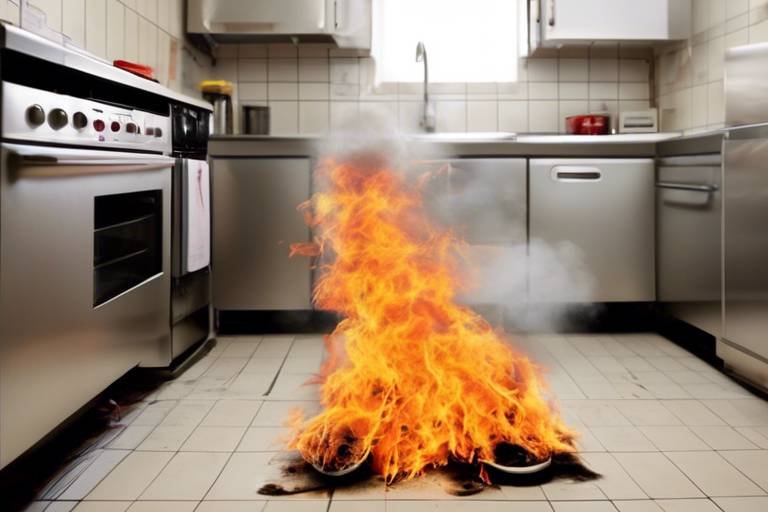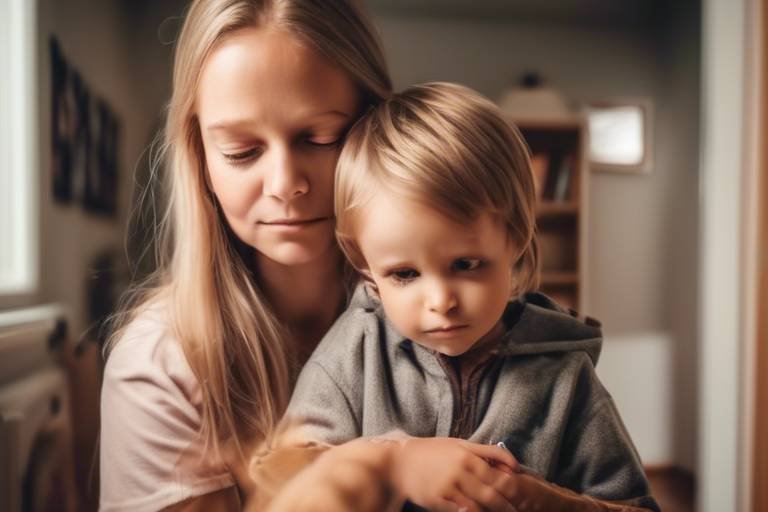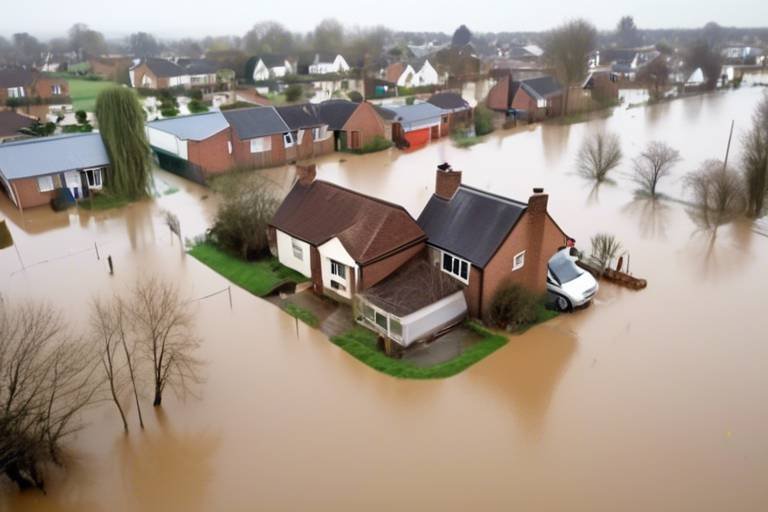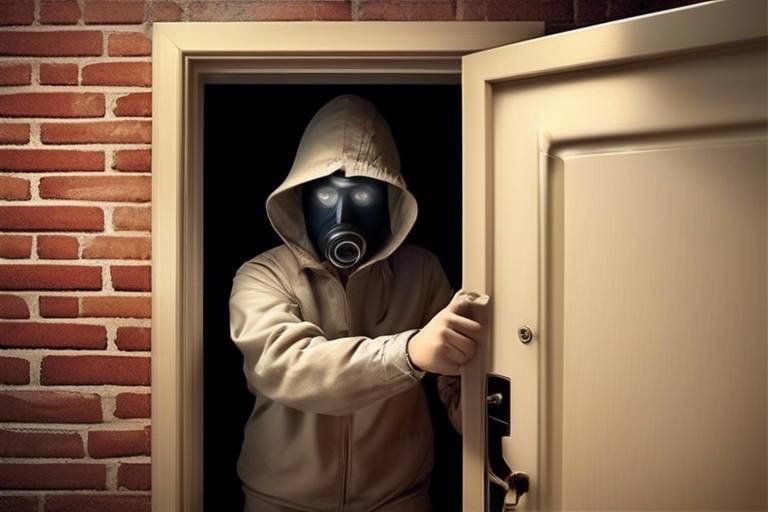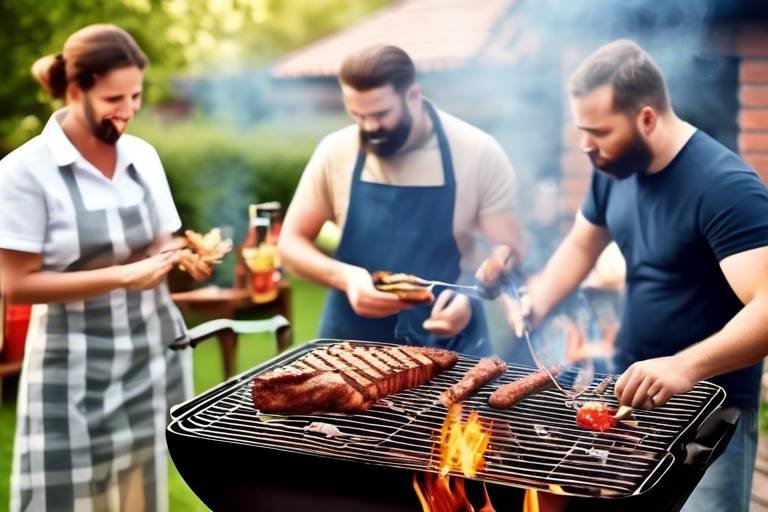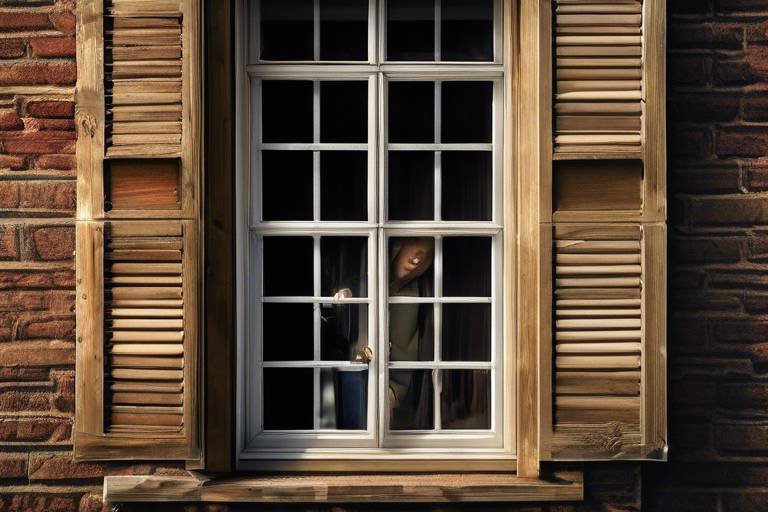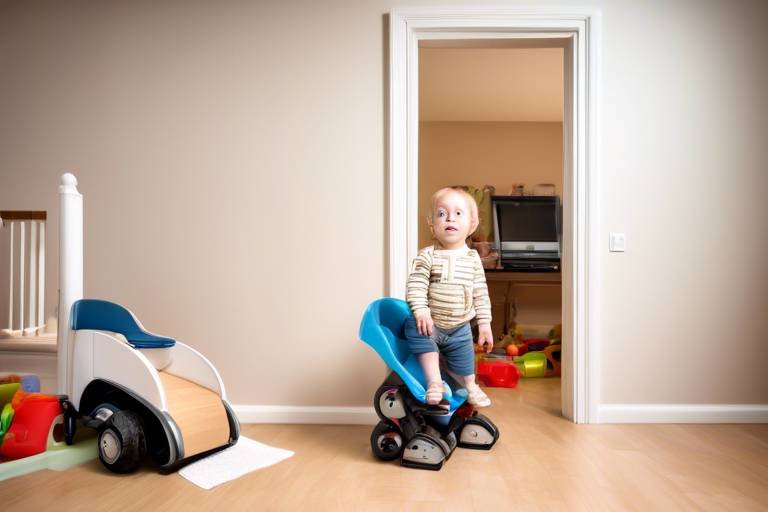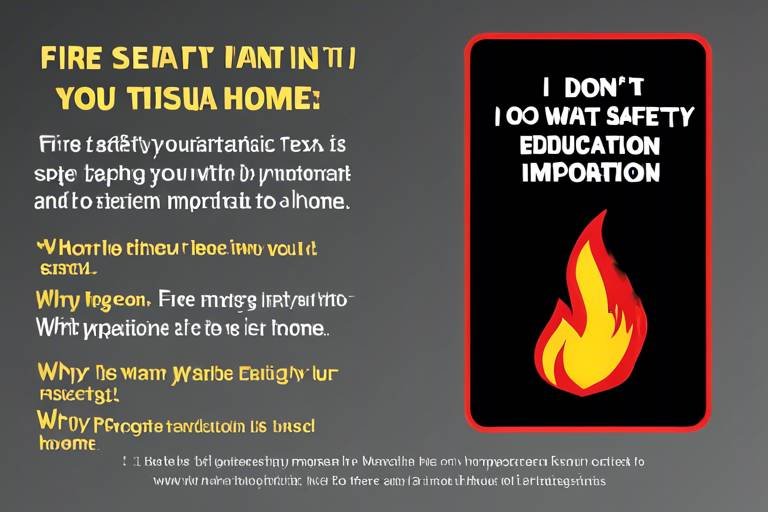Fire Safety in Kitchens – Preventive Measures
Cooking is one of life's greatest pleasures, but it can quickly turn into a nightmare if fire safety isn't prioritized. Imagine the smell of your favorite dish wafting through the air, only to be interrupted by the alarming sound of a smoke detector. This is a scenario that no one wants to face. In fact, the kitchen is often considered the heart of the home, and with that comes the responsibility of ensuring it remains a safe space. In this article, we will explore essential fire safety measures that can be implemented in kitchens to prevent fires and ensure a safer cooking environment for everyone.
Understanding the potential risks and hazards present in your kitchen is the first step towards creating a safe cooking environment. From unattended pots boiling over to grease fires igniting unexpectedly, the kitchen is filled with potential dangers. But fear not! With a little knowledge and some proactive measures, you can significantly reduce the risk of a kitchen fire. So, let’s dive into the specifics of kitchen fire safety, starting with understanding the common fire risks.
Identifying common kitchen fire hazards is crucial for prevention. Did you know that cooking equipment is the leading cause of home fires? This includes stoves, ovens, and even microwaves. When we cook, we often get distracted—maybe the phone rings or the kids need attention. These distractions can lead to leaving food unattended, which is a recipe for disaster. Additionally, flammable materials such as dish towels, paper, and even spices can ignite if they come too close to a heat source. By recognizing these hazards, you can take steps to mitigate these risks effectively.
One effective strategy is to keep your cooking area organized and free of clutter. This means ensuring that all flammable items are stored away from heat sources. For instance, if you’re frying food, ensure that your cooking oils are stored in a cool, dry place, away from the stove. Furthermore, always keep a fire extinguisher within reach, specifically one rated for kitchen fires. This can be a lifesaver in case of an emergency.
Equipping your kitchen with the right fire safety tools can save lives. Imagine having a fire extinguisher right at your fingertips during a kitchen mishap. It’s not just a good idea; it’s essential! Key equipment includes:
- Fire extinguishers: They should be easily accessible and appropriate for kitchen fires.
- Smoke detectors: These should be installed in or near the kitchen and regularly tested.
- Fire blankets: These can be used to smother small fires or wrap around a person in case of an emergency.
Not all fire extinguishers are suitable for kitchen fires. For instance, using a water extinguisher on a grease fire can make things worse. It’s essential to select the appropriate type based on the potential fire sources present in your kitchen. The most common extinguisher for kitchen use is the Class K extinguisher, designed specifically for cooking oils and fats. Always check the label to ensure it meets your kitchen's needs.
Understanding the different types of fire extinguishers is crucial. Here’s a quick overview:
| Type | Use |
|---|---|
| Class A | Ordinary combustibles (wood, paper) |
| Class B | Flammable liquids (oils, gasoline) |
| Class C | Electrical fires |
| Class K | Cooking oils and fats |
Regular maintenance of fire safety equipment is vital for effectiveness. Make it a habit to check your smoke detectors monthly and replace batteries as needed. Fire extinguishers should be inspected annually to ensure they are charged and functional. By keeping these tools in top shape, you can ensure they will be ready when you need them most.
Smoke detectors are essential for early fire detection. Installing smoke alarms in kitchens is not just a good idea; it’s a requirement in many places. Regular maintenance is crucial, so make sure to test them monthly and replace batteries at least once a year. Remember, a functioning smoke detector can alert you to danger before it becomes a full-blown fire.
Adopting safe cooking habits can significantly reduce fire risks. For instance, always monitor your cooking appliances. It’s crucial to keep an eye on what you’re cooking to prevent overheating. Have you ever left a pot boiling on the stove while answering the door? That’s a common mistake that can lead to disastrous consequences. Instead, try to stay in the kitchen while cooking or set a timer to remind you to check back.
Never leave cooking unattended! It might sound cliché, but it’s a rule worth repeating. If you need to step away, turn off the heat or ask someone to watch the stove for you. This simple act can prevent many kitchen fires from occurring.
Using cooking oils safely can prevent flare-ups. Always heat oils slowly and avoid overfilling pans. If oil starts to smoke, it’s too hot, and you should remove it from the heat immediately. In case of a grease fire, remember: never use water! Instead, cover the pan with a lid or use a fire extinguisher rated for grease fires.
Having an emergency response plan is vital for kitchen safety. In the heat of the moment, it can be easy to panic, but knowing what to do can save lives. Ensure everyone in the household is aware of the plan, including how to evacuate and where to meet outside.
Identifying and practicing evacuation routes can save lives. Make sure everyone knows how to exit safely in case of a kitchen fire. This includes keeping pathways clear of obstacles and knowing multiple exit routes in your home.
Knowing when and how to call for help is crucial during a fire. Keep emergency numbers readily available and ensure everyone knows how to use a phone to call for help. In case of a fire, if it’s safe to do so, evacuate first and then call for emergency services.
Education is key to fire safety. It’s important to teach all family members about kitchen safety and fire prevention strategies. This includes children, who should be educated on the dangers of cooking and the importance of fire safety.
Regular fire drills can prepare everyone for emergencies. Conducting effective fire drills in the home, focusing on kitchen safety, ensures that everyone knows what to do when the alarm goes off. Practice makes perfect, and being prepared can make a significant difference in an emergency.
Informing guests about kitchen safety can prevent accidents. When hosting, take a moment to share important safety practices with your visitors. This can be as simple as letting them know where the fire extinguisher is located or reminding them not to leave cooking unattended.
Maintaining fire safety in the kitchen is an ongoing effort. It requires vigilance and proactive measures to prevent kitchen fires. By implementing the tips outlined in this article, you can create a safer cooking environment for you and your loved ones. Remember, a little awareness goes a long way in preventing disasters. Stay safe, stay informed, and keep your kitchen the heart of your home!
Q: What should I do if a fire starts in my kitchen?
A: If a fire starts, remain calm. If it's small and manageable, use a fire extinguisher or cover it with a lid. If it grows, evacuate immediately and call emergency services.
Q: How often should I check my smoke detectors?
A: You should test your smoke detectors monthly and replace the batteries at least once a year.
Q: What type of fire extinguisher is best for kitchen fires?
A: A Class K fire extinguisher is ideal for kitchen fires, especially those involving cooking oils and fats.
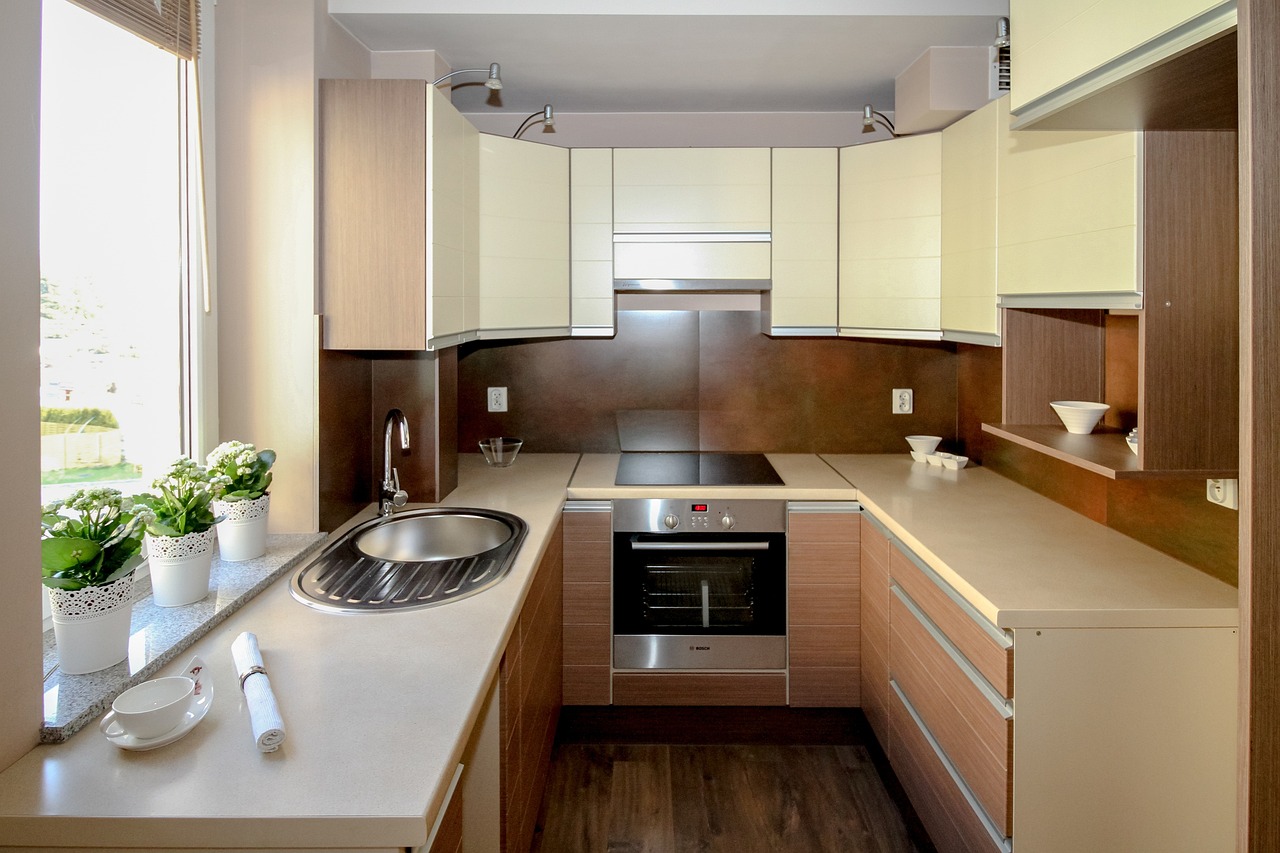
Understanding Kitchen Fire Risks
When it comes to cooking, the kitchen is often the heart of the home, but it can also be a hotbed for potential fire hazards. Understanding these kitchen fire risks is crucial for everyone who spends time in the kitchen, whether you're a seasoned chef or just a weekend warrior. Did you know that cooking is the leading cause of home fires? It’s true! With so many potential hazards lurking in your kitchen, it’s vital to recognize them and take proactive steps to mitigate the risks.
One of the most common causes of kitchen fires is unattended cooking. Imagine this: you're whipping up a delicious dinner, and the phone rings. You step away for just a moment, but that moment is all it takes for a small flame to turn into a raging fire. This is why it’s essential to stay vigilant while cooking. Always keep an eye on your pots and pans, and never leave them unattended, especially when using oil or high heat.
Another significant risk factor is the improper use of cooking oils. Oils can ignite easily if they get too hot, leading to dangerous flare-ups. If you're frying something, be sure to monitor the temperature closely. If you notice smoke rising, it's time to turn down the heat or remove the pan from the burner. Additionally, always keep a lid nearby when frying; this can help smother flames if they do occur.
Kitchen appliances also pose fire risks. Faulty wiring or malfunctioning equipment can spark fires unexpectedly. Regularly inspect your appliances and cords for any signs of wear and tear. If you notice anything unusual, it’s best to have it checked out. Remember, a little maintenance goes a long way in preventing kitchen fires!
Here are some other common kitchen hazards to keep in mind:
- Flammable materials: Keep dish towels, paper, and other flammable materials away from the stove.
- Overloaded electrical outlets: Avoid plugging too many appliances into one outlet to prevent overheating.
- Grease buildup: Regularly clean your stove and oven to prevent grease from accumulating and catching fire.
By recognizing these risks, you can create a safer cooking environment for yourself and your family. Remember, fire safety in the kitchen isn't just about having the right equipment; it's about being aware of the potential dangers and taking steps to avoid them. So, the next time you step into your kitchen, keep these tips in mind and ensure that your culinary adventures remain delicious and safe!
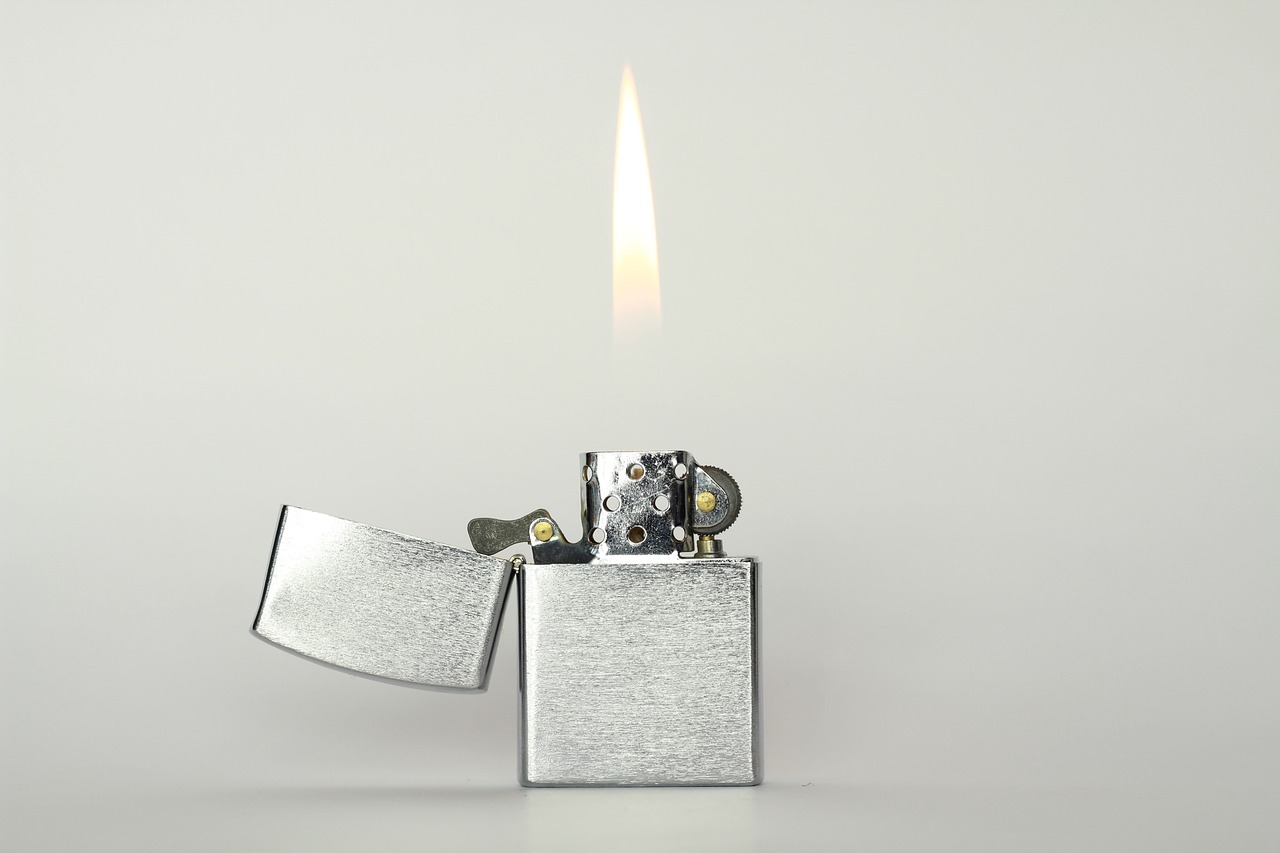
Essential Fire Safety Equipment
When it comes to kitchen safety, having the right fire safety equipment is not just important; it's absolutely essential. Think of your kitchen as a bustling hub of activity, where delicious meals are prepared, but also a place where potential fire hazards lurk around every corner. The right equipment can be the difference between a minor scare and a full-blown disaster. So, let’s dive into the must-have tools that every kitchen should have to ensure a safer cooking environment.
First and foremost, a fire extinguisher is a critical piece of equipment. It's like having a superhero on standby, ready to tackle flames before they get out of control. But not just any fire extinguisher will do; you need one that's specifically rated for kitchen fires. This brings us to the importance of understanding the types of fire extinguishers available and their classifications. For instance, a Class K extinguisher is designed for fires involving cooking oils and fats, which are common in kitchens. Having the right type of extinguisher can save precious seconds in an emergency.
When selecting a fire extinguisher, consider the potential fire sources present in your kitchen. Here’s a quick rundown of the different types:
| Type | Suitable For |
|---|---|
| Class A | Ordinary combustibles (wood, paper) |
| Class B | Flammable liquids (grease, oil) |
| Class C | Electrical fires |
| Class K | Cooking oils and fats |
In addition to fire extinguishers, having smoke detectors and alarms in your kitchen is critical for early fire detection. These devices act as your first line of defense, alerting you to danger before it escalates. It's crucial to install smoke alarms in the kitchen area and ensure they are regularly tested and maintained. A smoke detector can be the difference between a quick escape and a tragic outcome.
Now, owning fire safety equipment is one thing, but maintaining it is another. Regular checks can ensure that your fire extinguishers are charged and your smoke detectors have fresh batteries. For fire extinguishers, check the pressure gauge monthly and have them serviced every few years. Smoke detectors should be tested monthly, and batteries should be replaced at least once a year. Keeping a maintenance schedule can help ensure that your equipment is always in top shape when you need it most.
Lastly, consider having a fire blanket handy. This simple yet effective tool can smother small fires, especially those involving cooking oils. A fire blanket is easy to use and can be a lifesaver in emergencies. Just remember, it's not a substitute for a fire extinguisher but rather a complementary tool in your fire safety arsenal.
In summary, equipping your kitchen with essential fire safety equipment is a vital step in preventing kitchen fires. From fire extinguishers to smoke detectors and fire blankets, each piece of equipment plays a critical role in keeping your cooking space safe. Remember, safety is not just about having the right tools; it’s about knowing how to use them effectively and maintaining them regularly. So, take a moment today to assess your kitchen and ensure you have all the necessary fire safety gear at your fingertips!
- What type of fire extinguisher is best for a kitchen? A Class K extinguisher is specifically designed for fires involving cooking oils and fats.
- How often should I test my smoke detectors? Smoke detectors should be tested monthly and batteries replaced at least once a year.
- Can a fire blanket be reused? Fire blankets can generally be reused if they are not damaged or contaminated.

Choosing the Right Fire Extinguisher
When it comes to fire safety in the kitchen, selecting the right fire extinguisher is akin to choosing the right tool for a job. Just as you wouldn’t use a hammer to screw in a lightbulb, using the wrong type of extinguisher can lead to disastrous results. The kitchen is a hotspot for various fire hazards, and understanding which extinguisher to use can make a life-saving difference. So, let’s break it down!
Firstly, it's essential to recognize the different types of fires that can occur in a kitchen. Most kitchen fires are classified into three main categories:
- Class A: Fires involving ordinary combustibles like wood, paper, and cloth.
- Class B: Fires caused by flammable liquids such as grease, oil, and gasoline.
- Class C: Fires that involve electrical equipment.
Now, when you’re choosing a fire extinguisher for your kitchen, you’ll want to look for one that can handle these specific types of fires. The most recommended extinguisher for kitchen use is a multi-purpose extinguisher labeled as ABC, which can combat Class A, B, and C fires. This versatility ensures that you’re prepared for various fire scenarios that might arise while cooking.
Another important consideration is the size of the fire extinguisher. A common choice for household kitchens is a 2.5 to 5-pound extinguisher. This size is manageable for most people and can effectively put out small fires before they escalate. However, if you often cook with oils or have a larger kitchen space, you might want to consider a larger unit for added safety.
Additionally, it’s crucial to think about the placement of your fire extinguisher. It should be easily accessible, mounted on a wall near your cooking area, but not so close that it could be engulfed in flames during a fire. Ideally, you should be able to reach it without having to run through smoke or flames.
Lastly, don’t forget about maintenance! Regularly check your fire extinguisher to ensure it’s fully charged and inspect the pressure gauge. If the needle is in the green zone, you’re good to go! If it’s not, it may need to be recharged or replaced. Remember, a fire extinguisher is only effective if it’s in good working condition.
In summary, choosing the right fire extinguisher involves understanding the types of fires you might face, selecting a multi-purpose model, considering the size and placement, and maintaining it regularly. By taking these steps, you can significantly enhance your kitchen's fire safety and ensure you’re prepared for any emergency. Safety in the kitchen isn’t just about cooking; it’s about being proactive and ready for anything!
1. What type of fire extinguisher is best for kitchen use?
The best type of fire extinguisher for kitchen use is a multi-purpose extinguisher labeled as ABC, which can handle Class A, B, and C fires.
2. How often should I check my fire extinguisher?
It's advisable to check your fire extinguisher monthly to ensure it’s fully charged and in good condition. An annual professional inspection is also recommended.
3. Can I use water to put out a grease fire?
No, using water on a grease fire can cause the flames to spread. Instead, use a Class B fire extinguisher or cover the fire with a metal lid or a baking sheet to smother it.
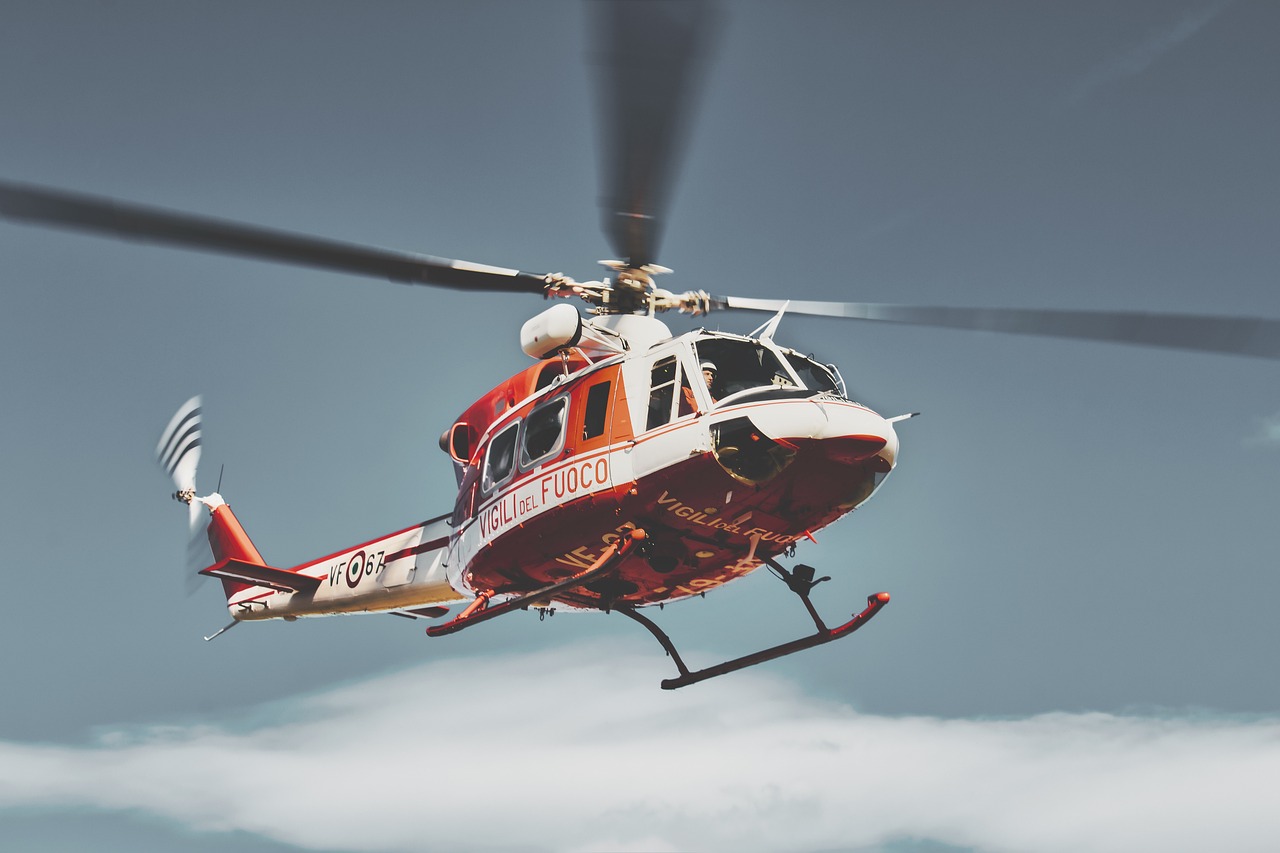
Types of Fire Extinguishers
When it comes to fire safety in the kitchen, understanding the available is crucial. Not all extinguishers are created equal; each is designed to combat specific types of fires based on the materials involved. In kitchens, where cooking oils, electrical appliances, and other combustible materials are present, knowing which extinguisher to use can make a significant difference in an emergency.
Fire extinguishers are classified into different categories, each denoted by a letter that signifies the type of fire they can extinguish:
| Class | Type of Fire | Suitable Extinguisher |
|---|---|---|
| A | Ordinary combustibles (wood, paper, cloth) | Water or Foam Extinguishers |
| B | Flammable liquids (grease, oil, gasoline) | Foam, CO2, or Dry Powder Extinguishers |
| C | Electrical fires (cooking appliances, wiring) | CO2 or Dry Powder Extinguishers |
| D | Combustible metals (magnesium, sodium) | Dry Powder Extinguishers specifically for metal fires |
| K | Cooking oils and fats | Wet Chemical Extinguishers |
In the kitchen, the most relevant classes are B, C, and K. Class B extinguishers are essential for tackling fires caused by flammable liquids, which are common in cooking scenarios. Class C extinguishers are specifically designed for electrical fires, which can occur if an appliance malfunctions. Meanwhile, Class K extinguishers are tailored for kitchen fires involving cooking oils, making them indispensable for any home chef.
Choosing the right extinguisher is just the beginning. It's also essential to ensure that the extinguisher is easily accessible and that all household members know its location and how to use it. Regular checks should be performed to ensure that the extinguisher is in working order, as a faulty extinguisher can be just as dangerous as not having one at all.
In conclusion, understanding the and their specific uses is vital for kitchen safety. By selecting the appropriate extinguisher and maintaining it properly, you can significantly increase your chances of effectively managing a fire should one occur. Remember, being prepared is key to ensuring a safe cooking environment!
- What should I do if a fire starts in my kitchen? Stay calm, turn off the heat source, and use the appropriate fire extinguisher if it's safe to do so. If the fire is too large, evacuate immediately and call emergency services.
- How often should I check my fire extinguisher? It's recommended to check your fire extinguisher monthly to ensure it's in good condition and fully charged.
- Can I use water on a grease fire? No! Using water on a grease fire can make it worse. Instead, use a Class K extinguisher or cover the fire with a metal lid or baking soda.
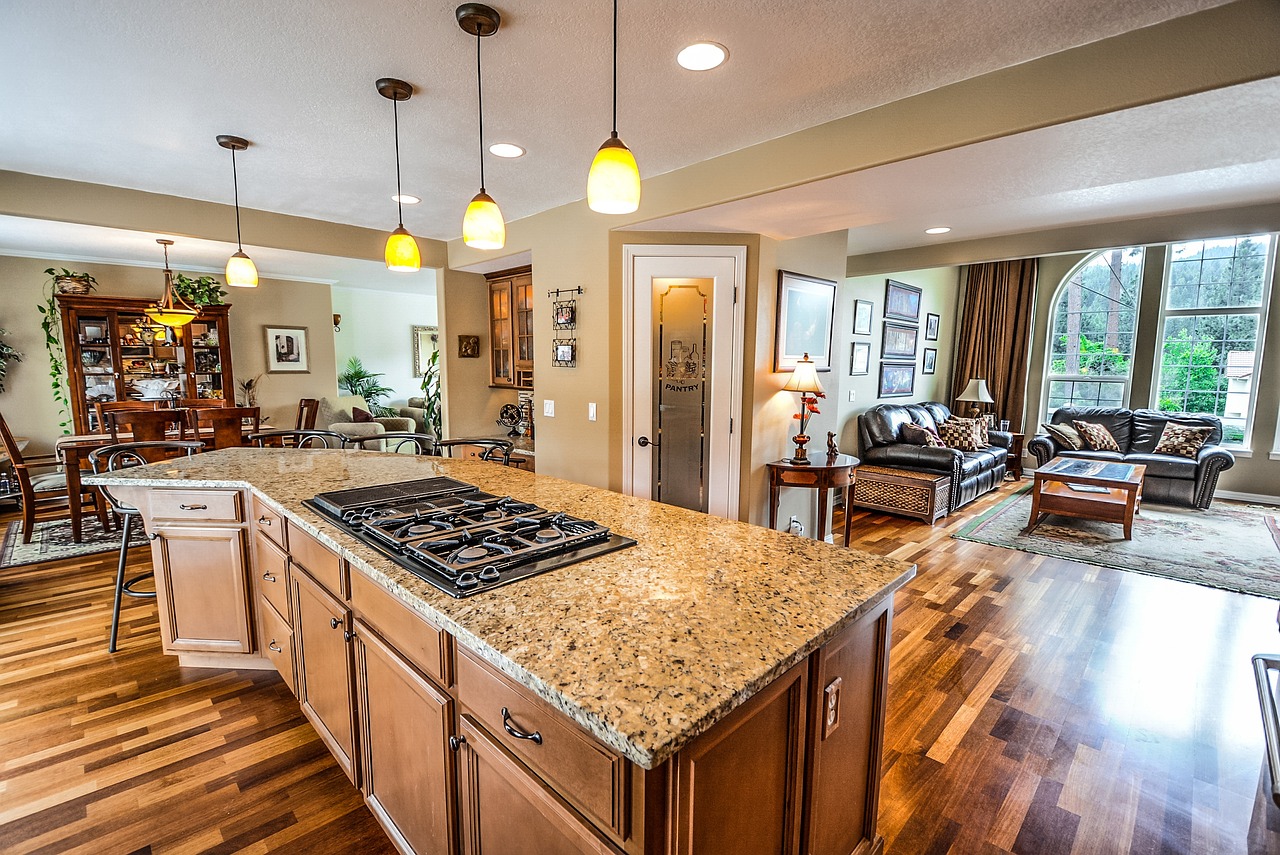
Maintaining Fire Safety Equipment
When it comes to fire safety in the kitchen, having the right equipment is just the beginning. Regular maintenance of your fire safety tools is essential to ensure they function effectively when you need them the most. Imagine having a fire extinguisher that doesn't work because it hasn't been checked in years—it's a nightmare scenario that can easily be avoided with a little diligence.
First and foremost, it’s crucial to check your fire extinguishers monthly. Look for any signs of damage, such as dents or rust, and ensure that the pressure gauge is in the green zone. If you notice anything unusual, it’s time to replace it. Additionally, fire extinguishers should be serviced annually by a professional to guarantee they are in optimal working condition. Remember, a well-maintained extinguisher can be the difference between a small kitchen mishap and a full-blown disaster.
Next up are smoke detectors. These little devices are your first line of defense against smoke and fire. It’s recommended to test your smoke alarms monthly by pressing the test button. If you hear a beep, you’re good to go! If not, replace the batteries immediately. Also, don’t forget to replace the entire smoke detector every ten years, as they can become less sensitive over time. Keeping a calendar reminder can help you stay on top of these essential tasks.
Another often-overlooked piece of equipment is the fire blanket. These are incredibly useful for smothering small fires, particularly those caused by cooking. Make it a habit to check your fire blanket for any tears or damage, and ensure it’s easily accessible in your kitchen. In an emergency, you won’t have time to search for it!
It’s also wise to keep a maintenance log for all your fire safety equipment. This log can include details such as the date of your last check, any repairs made, and when the next service is due. Having a visual reminder can significantly enhance your commitment to fire safety.
To summarize, maintaining fire safety equipment is not just a one-time task; it’s a continuous commitment to protecting your home and loved ones. By regularly checking your fire extinguishers, smoke detectors, and fire blankets, you can ensure that they are ready to spring into action when you need them. So, take a moment to evaluate your kitchen safety gear today—it could save your life tomorrow.
- How often should I check my fire extinguisher? It’s recommended to check your fire extinguisher monthly.
- When should I replace my smoke detector? Replace your smoke detector every ten years, or sooner if it’s not functioning properly.
- What should I do if my fire extinguisher is damaged? If you notice any signs of damage, replace the fire extinguisher immediately.
- Can I use a fire blanket on any type of fire? Fire blankets are best used for small fires, particularly those involving cooking oils.

Smoke Detectors and Alarms
When it comes to fire safety, smoke detectors and alarms are your first line of defense. Think of them as the vigilant sentinels of your kitchen, always on the lookout for danger. These devices are essential for early fire detection, providing you with precious seconds to react before a small flame turns into a raging inferno. Installing smoke alarms in your kitchen is not just a good idea; it’s a necessity that can save lives.
But simply having smoke detectors isn’t enough. It’s crucial to ensure that they are installed correctly and maintained regularly. For instance, smoke detectors should be placed on the ceiling or high on the wall, as smoke rises. Ideally, you should have a smoke detector located within 10 feet of your cooking appliances, but avoid placing them directly above stoves to prevent false alarms. Regular maintenance checks, like testing the alarms monthly and changing the batteries at least once a year, can make all the difference in ensuring they function correctly when needed.
Moreover, modern smoke detectors come equipped with various features that enhance their effectiveness. Some models are designed to differentiate between smoke from cooking and smoke from actual fires, reducing the chances of those annoying false alarms that can disrupt your cooking. Additionally, interconnected smoke alarms can alert you to danger in one part of the house while you’re in another, providing an extra layer of security.
| Type of Smoke Detector | Best Use |
|---|---|
| Ionization Smoke Detectors | Best for detecting fast-flaming fires. |
| Photoelectric Smoke Detectors | More effective for smoldering fires. |
| Combination Detectors | Offers the benefits of both ionization and photoelectric. |
In conclusion, smoke detectors and alarms are not just gadgets; they are lifesavers. Installing them in your kitchen and ensuring they are well-maintained can provide you with peace of mind while cooking. Remember, a little vigilance goes a long way in fire safety. So, take the time to assess your smoke detection needs and make the necessary adjustments today!
- How often should I test my smoke detectors? It’s recommended to test your smoke detectors at least once a month.
- When should I replace my smoke detectors? Smoke detectors should be replaced every 10 years, or sooner if they don’t respond properly during testing.
- Can I install smoke detectors myself? Yes, most smoke detectors come with easy-to-follow installation instructions, but if in doubt, consider hiring a professional.
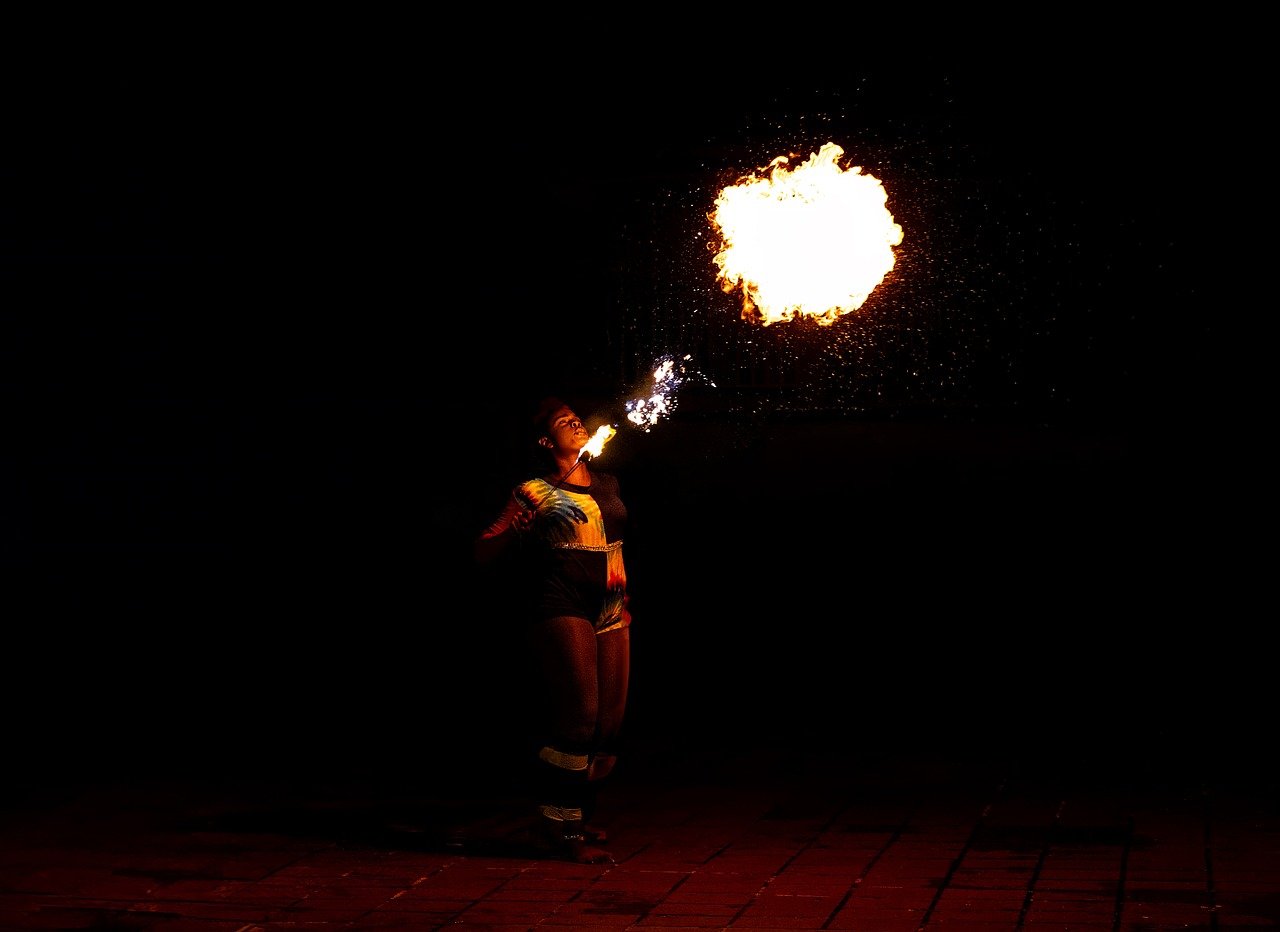
Safe Cooking Practices
When it comes to cooking, safety should always be your top priority. Think of your kitchen as a mini-laboratory where heat, flames, and various ingredients come together to create delicious meals. However, just like in any lab, a little oversight can lead to big problems. So, how can we make sure our cooking adventures don't end in disaster? Here are some essential practices to keep your kitchen safe and sound while whipping up your favorite dishes.
First and foremost, always monitor your cooking appliances. Just like you wouldn't leave a toddler alone with a box of crayons, you shouldn't leave your stove or oven unattended. It’s easy to get distracted by your phone or a TV show, but a moment of inattention can lead to overheating, smoke, or even flames. If you need to step away, turn off the heat or take a timer with you to remind you to check back in.
Next, let's talk about the proper use of cooking oils. Cooking oils are fantastic for adding flavor and texture to your meals, but they can also be a fire hazard if not handled properly. Always keep an eye on the temperature of your oils; if they start to smoke, it’s a sign they’re too hot and can ignite. Additionally, never pour water on a grease fire. Instead, use a lid to smother the flames or a fire extinguisher rated for grease fires (Class K).
In addition to these practices, it’s wise to keep your cooking area clean and clutter-free. A tidy kitchen not only makes cooking easier but also reduces the risk of accidental fires. Keep flammable materials like dish towels, paper products, and food packaging away from the stovetop. Regularly wipe down surfaces to avoid grease buildup, which can ignite when exposed to heat.
To further enhance your kitchen safety, consider establishing a designated cooking zone. This means creating a space where all cooking activities take place, free from distractions. By setting boundaries, you can minimize the risk of accidents and ensure that everyone knows to stay clear when the stove is hot. Involving your family in this practice can be a fun way to foster teamwork and communication in the kitchen.
Lastly, it’s essential to educate yourself and your family about fire safety procedures. Make sure everyone knows how to use kitchen equipment safely, and establish a plan for what to do in case of a fire. This could include knowing how to operate a fire extinguisher, identifying exits, and having emergency numbers easily accessible. Remember, knowledge is power, and being prepared can make all the difference in a crisis.
1. What should I do if a grease fire occurs?
If a grease fire starts, turn off the heat immediately. Cover the pan with a lid or use baking soda to smother the flames. Never use water, as it can cause the fire to spread.
2. How often should I check my smoke detectors?
It’s recommended to check your smoke detectors monthly and replace the batteries at least once a year. If the detector is more than 10 years old, consider replacing it entirely.
3. Can I leave the kitchen while cooking?
It's best to stay in the kitchen while cooking, especially when using high heat. If you must leave, turn off the stove or set a timer to remind you to return quickly.
4. What type of fire extinguisher is best for kitchen use?
A Class K fire extinguisher is ideal for kitchen fires involving cooking oils and fats. However, a multi-purpose extinguisher (Class ABC) can also be effective for general use.
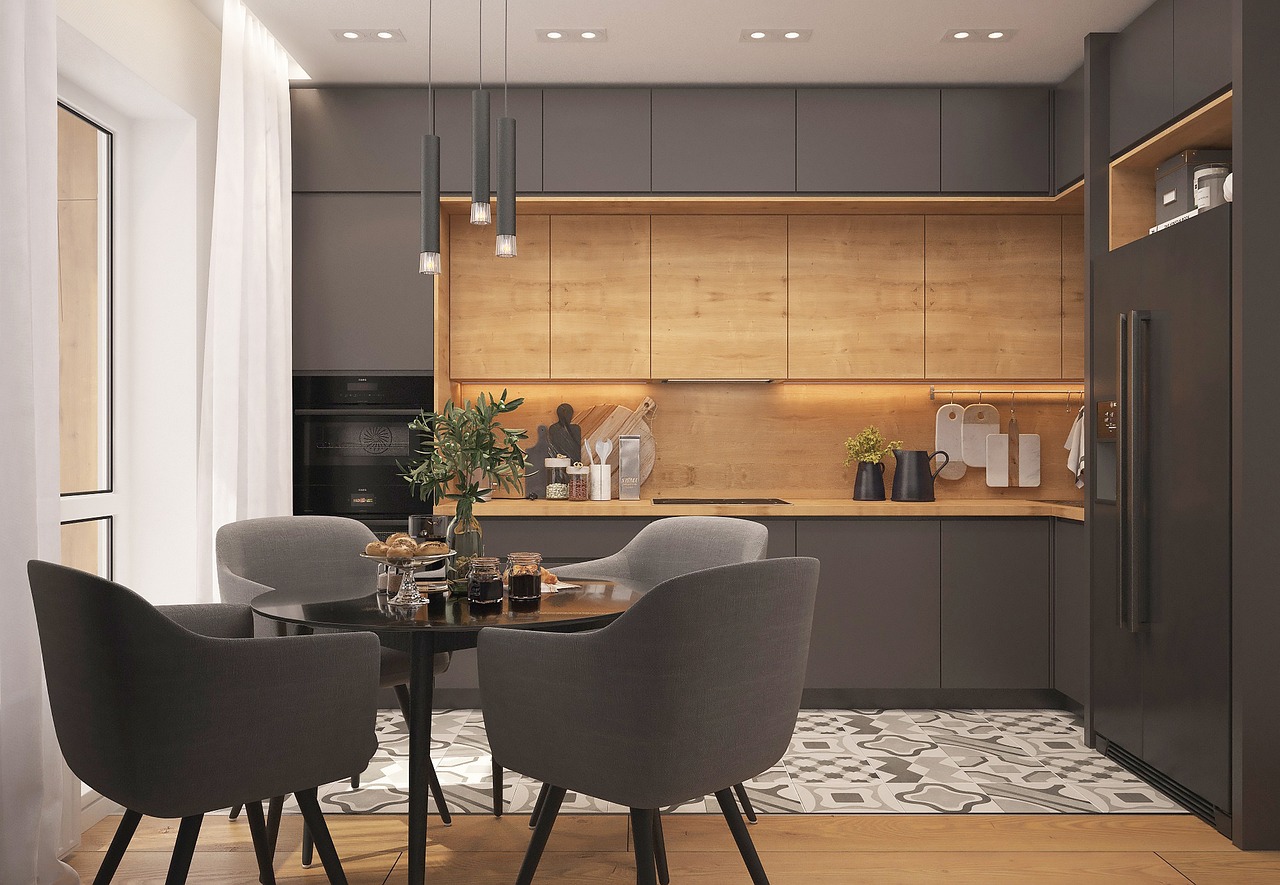
Monitoring Cooking Appliances
When it comes to kitchen safety, one of the most critical aspects is . You might think that once you set the timer and walk away, everything will be fine, but that’s where the danger often lies. Just like a hawk watches over its nest, you need to keep a vigilant eye on your cooking activities. Whether you’re frying up some delicious chicken or simmering a hearty stew, the potential for accidents increases dramatically when you leave your cooking unattended.
Many kitchen fires are sparked by appliances left on too long or forgotten altogether. For instance, imagine you’ve put a pot of water on to boil and then get distracted by a phone call or a TV show. Before you know it, that pot could boil dry, and the heat source could ignite nearby items. To avoid such situations, it's essential to establish a habit of staying in the kitchen while cooking. This ensures that you can respond quickly if something goes awry.
Additionally, it’s crucial to understand the specific risks associated with various cooking appliances. For example, deep fryers can be particularly hazardous if not monitored closely. The oil can reach dangerously high temperatures, leading to flare-ups. To mitigate these risks, consider the following tips:
- Stay Present: Always stay in the kitchen while cooking, especially when using high heat.
- Use Timers: Set a timer to remind you to check on your food periodically.
- Keep Flammable Items Away: Ensure that towels, paper, and other flammable materials are kept at a safe distance from cooking appliances.
Moreover, you should familiarize yourself with the specific features of your appliances. Many modern ovens and stoves come equipped with safety features that can prevent overheating or accidental ignition. For instance, some models have automatic shut-off functions that activate if the appliance overheats. Knowing how to use these features can significantly enhance your kitchen safety.
Lastly, it’s a good practice to regularly inspect your cooking appliances for any signs of wear or malfunction. If you notice anything unusual, such as strange noises or excessive heat, it’s best to address these issues immediately. Just like you wouldn’t ignore a warning light in your car, don’t ignore the signs that your kitchen appliances may need attention.
Q1: What should I do if a fire starts in my kitchen?
A1: If a fire starts, remain calm and assess the situation. If it’s small and manageable, use a fire extinguisher. If it’s too large, evacuate immediately and call emergency services.
Q2: How often should I check my smoke detectors?
A2: It’s recommended to check your smoke detectors at least once a month and change the batteries at least once a year.
Q3: Are there specific appliances that are more dangerous than others?
A3: Yes, appliances like deep fryers and stovetops pose higher risks due to the high temperatures they reach. Always monitor these closely while in use.
Q4: What should I do if I have to leave the kitchen while cooking?
A4: If you must leave, turn off the heat or ask someone to keep an eye on the cooking process until you return.

Proper Use of Cooking Oils
Cooking oils are essential in our kitchens, bringing flavor and texture to our favorite dishes. However, using them improperly can lead to dangerous flare-ups and kitchen fires. It’s crucial to understand how to handle these oils safely to minimize risks. First and foremost, always choose the right oil for your cooking method. For instance, oils with high smoke points, such as canola or avocado oil, are ideal for frying, while olive oil is better suited for sautéing or drizzling over finished dishes.
One of the most common mistakes people make is leaving oil unattended on the stove. This can lead to overheating, which not only alters the oil's flavor but can also ignite a fire. Always stay in the kitchen while cooking with oil, and keep a careful eye on the temperature. If you notice smoke rising from the oil, it’s a clear sign that it’s too hot and you should remove it from the heat immediately.
Additionally, be mindful of how much oil you are using. While a little oil can enhance flavor, too much can lead to dangerous situations. If you’re frying foods, use just enough oil to submerge them, and avoid overfilling the pan. This helps prevent spills and reduces the risk of oil catching fire. In fact, if oil does spill, clean it up immediately to avoid slipping hazards and potential fires.
Another important aspect of using cooking oils is their storage. Always store oils in a cool, dark place, away from heat sources. Exposure to light and heat can cause oils to go rancid and even become flammable. Make sure to check the expiration dates on your oils and dispose of any that have gone bad. When it comes to disposing of used cooking oil, never pour it down the drain or throw it in the trash. Instead, let it cool and then store it in a sealed container before taking it to a recycling center or following local disposal guidelines.
In summary, proper use of cooking oils is key to maintaining a safe kitchen environment. By choosing the right oil, monitoring cooking temperatures, using appropriate quantities, and storing oils correctly, you can significantly reduce the risk of kitchen fires. Remember, safety in the kitchen is not just about what you cook but how you cook it!
- What is the best oil for frying? Oils with high smoke points, like canola or peanut oil, are best for frying.
- How can I tell if oil is too hot? If the oil starts to smoke, it’s too hot and should be removed from the heat.
- Can I reuse cooking oil? Yes, but strain it to remove food particles and store it properly to avoid spoilage.
- What should I do if my cooking oil catches fire? Never use water! Instead, cover the pan with a lid to smother the flames or use a fire extinguisher rated for grease fires.
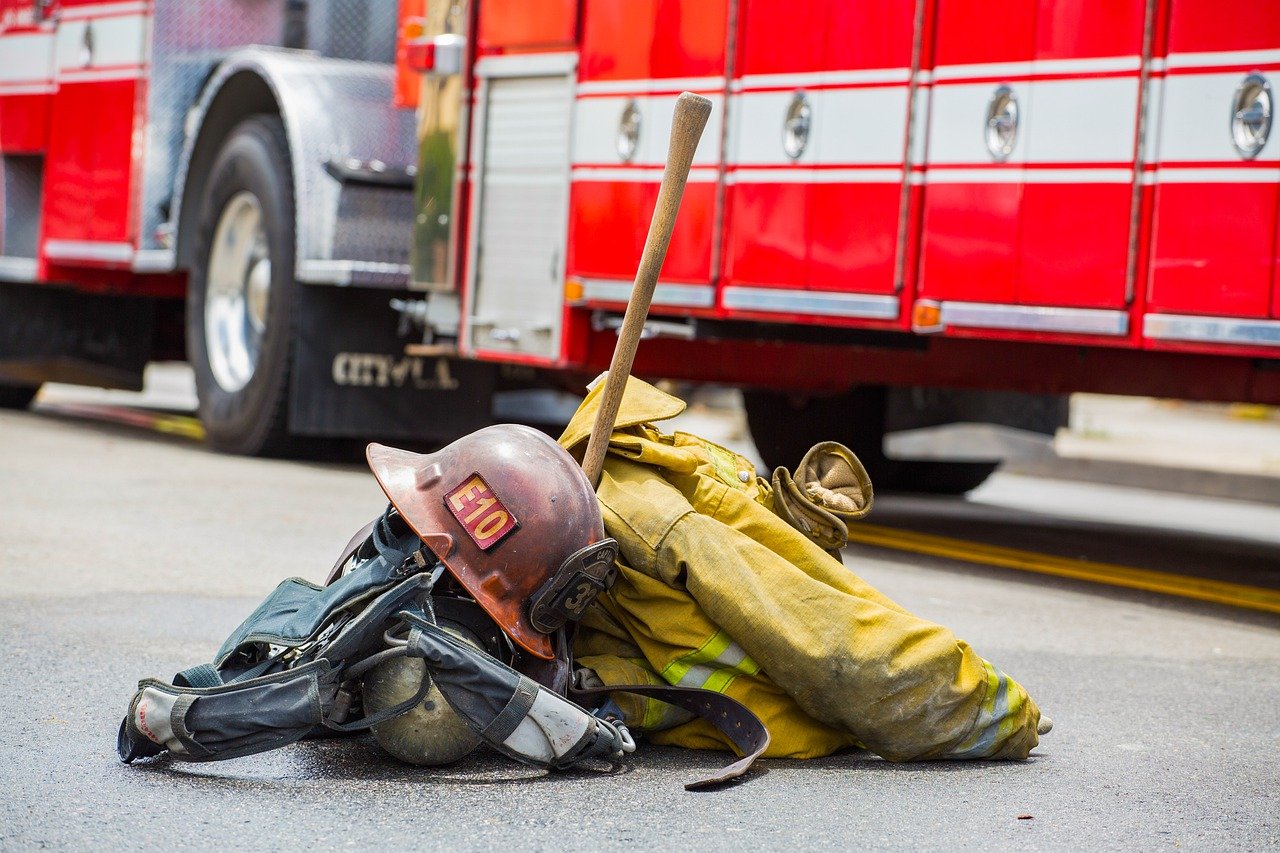
Emergency Response Plans
Having a solid emergency response plan in place is crucial for ensuring safety in the kitchen. Fires can ignite quickly, and being prepared can mean the difference between a minor incident and a major disaster. First and foremost, it's essential to establish clear procedures for what to do in case of a fire. This plan should include specific steps for everyone in the household to follow, ensuring that everyone knows how to react calmly and effectively.
A critical component of your emergency response plan is identifying evacuation routes. Make sure everyone in your home is familiar with the quickest and safest paths out of the kitchen and the house. It’s beneficial to practice these routes regularly, as familiarity can help reduce panic during an actual emergency. Consider creating a simple diagram of your home that highlights these routes and post it in a visible area, such as on the fridge or near the kitchen entrance. This visual cue can serve as a reminder for everyone.
In addition to evacuation routes, knowing when and how to call for help is vital. Ensure that emergency numbers, such as local fire departments, are easily accessible. It’s a good idea to keep a list of these numbers near the phone or saved on mobile devices for quick access. When calling for help, it’s crucial to provide clear information about your location and the nature of the emergency. Practicing this can help everyone feel more confident in their ability to respond effectively.
Furthermore, consider conducting regular fire drills that focus specifically on kitchen safety. These drills can help reinforce the importance of your emergency response plan and ensure everyone knows their role. During these drills, simulate various scenarios, such as a small grease fire or an appliance malfunction, and discuss the best ways to handle each situation. This practice can help to instill a sense of readiness and calm, making it easier to respond in a real emergency.
Lastly, it’s essential to maintain open communication about fire safety and emergency procedures with all family members. Encourage questions and discussions about any concerns they might have. This dialogue can help demystify the situation and empower everyone to take proactive steps in case of an emergency. Remember, the goal is to create a safe environment where everyone feels equipped to handle potential fire hazards effectively.
- What should I do first if a fire starts in the kitchen?
The first step is to remain calm. If the fire is small and manageable, you can attempt to extinguish it using a fire extinguisher. If it spreads, evacuate immediately and call for help. - How often should I practice fire drills?
It’s advisable to conduct fire drills at least twice a year to ensure everyone remembers the procedures and feels confident in their ability to respond. - What emergency numbers should I have on hand?
Keep local fire department numbers, emergency services, and poison control numbers readily accessible. Make sure everyone knows where to find them. - How can I educate my children about fire safety?
Involve them in discussions about fire safety, demonstrate how to use a fire extinguisher, and practice evacuation routes together.
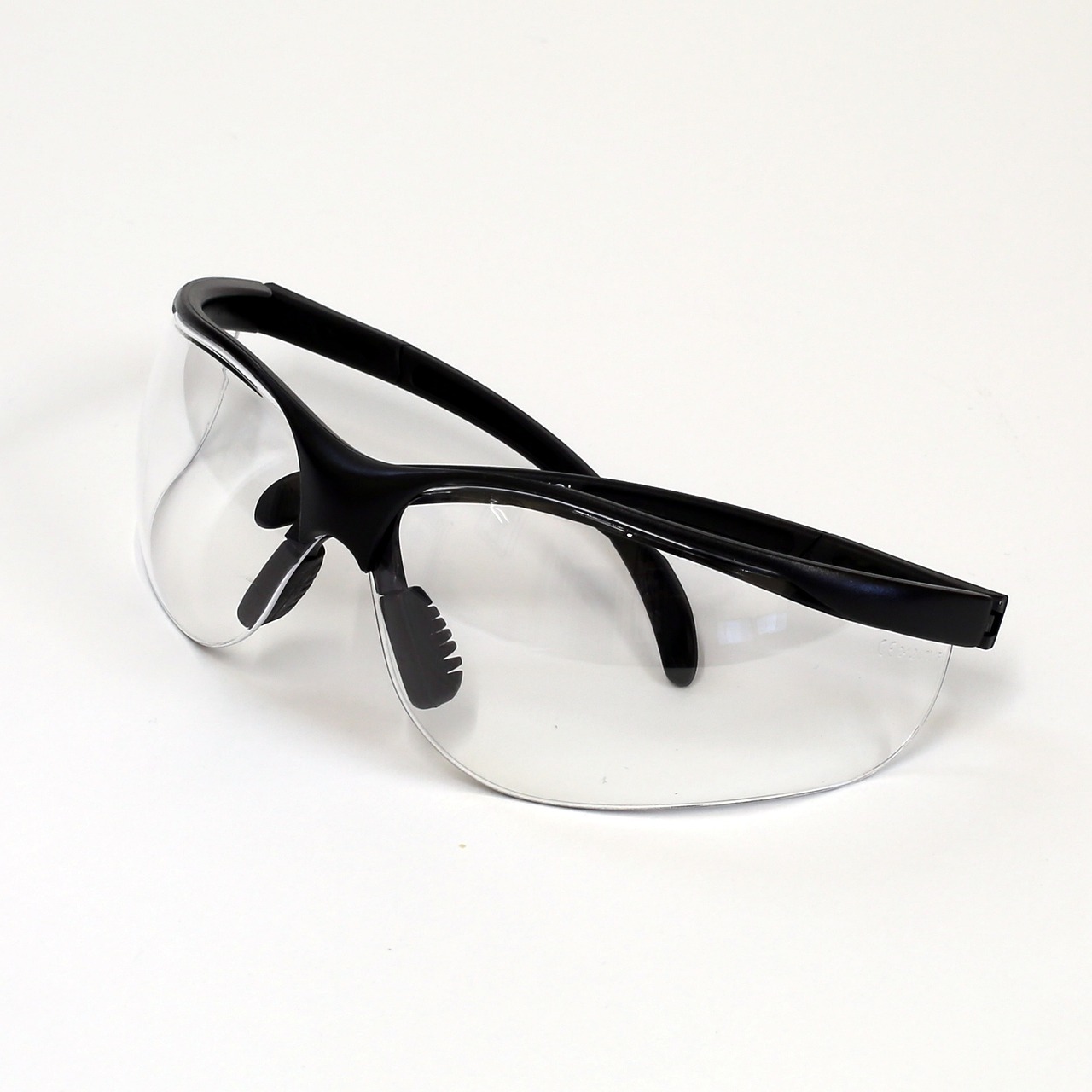
Evacuation Routes
When it comes to fire safety in the kitchen, having clearly defined is crucial. Imagine a scenario where a fire breaks out while you're cooking; the last thing you want is to be fumbling around, unsure of how to escape. Establishing and practicing evacuation routes can mean the difference between a safe exit and a dangerous situation. First, identify the nearest exits from your kitchen and ensure that they are easily accessible. This should include both doors and windows, as they can serve as potential escape routes.
It's also important to consider the layout of your home. If your kitchen is located at the back of the house, ensure that you have a clear path to the front door or another exit. Mark these routes in your home, and consider using bright tape or signs to indicate the way. Regular practice is key; just like fire drills in schools, your family should rehearse these routes so that everyone knows where to go in case of an emergency. Make it a fun family activity — after all, being prepared can save lives!
In addition to knowing the routes, it’s essential to keep them clear of obstacles. Clutter can impede your escape, so make it a habit to regularly check that hallways and exits are free from furniture, boxes, or other items that could block your way. Consider creating a fire evacuation plan that includes the following:
- Designated meeting points outside the home.
- Instructions for each family member regarding their specific evacuation route.
- Consideration for pets — how will you ensure their safety?
Lastly, educate your children about the importance of staying calm during an emergency. Panic can lead to poor decision-making, so practicing your evacuation plan can help instill a sense of confidence and preparedness. Remember, the goal is not just to escape but to do so safely and efficiently. By taking these steps, you're not just creating a plan; you're building a culture of safety in your home.
Q: How often should we practice our evacuation routes?
A: It's recommended to practice your evacuation routes at least twice a year. This ensures that everyone remembers the plan and can execute it calmly in case of an emergency.
Q: What should we do if we encounter smoke while evacuating?
A: If you encounter smoke, stay low to the ground where the air is clearer. Cover your mouth with a cloth to reduce smoke inhalation and proceed to your designated exit as quickly as possible.
Q: Should we have multiple evacuation routes?
A: Yes! Having multiple evacuation routes is crucial, especially if one route is blocked by fire or smoke. Ensure that all family members are familiar with these alternative routes.
Q: How can we ensure our pets are safe during an evacuation?
A: Designate a family member to be responsible for pets during an evacuation. Keep leashes and carriers near exits to make it easier to grab your pets and evacuate quickly.
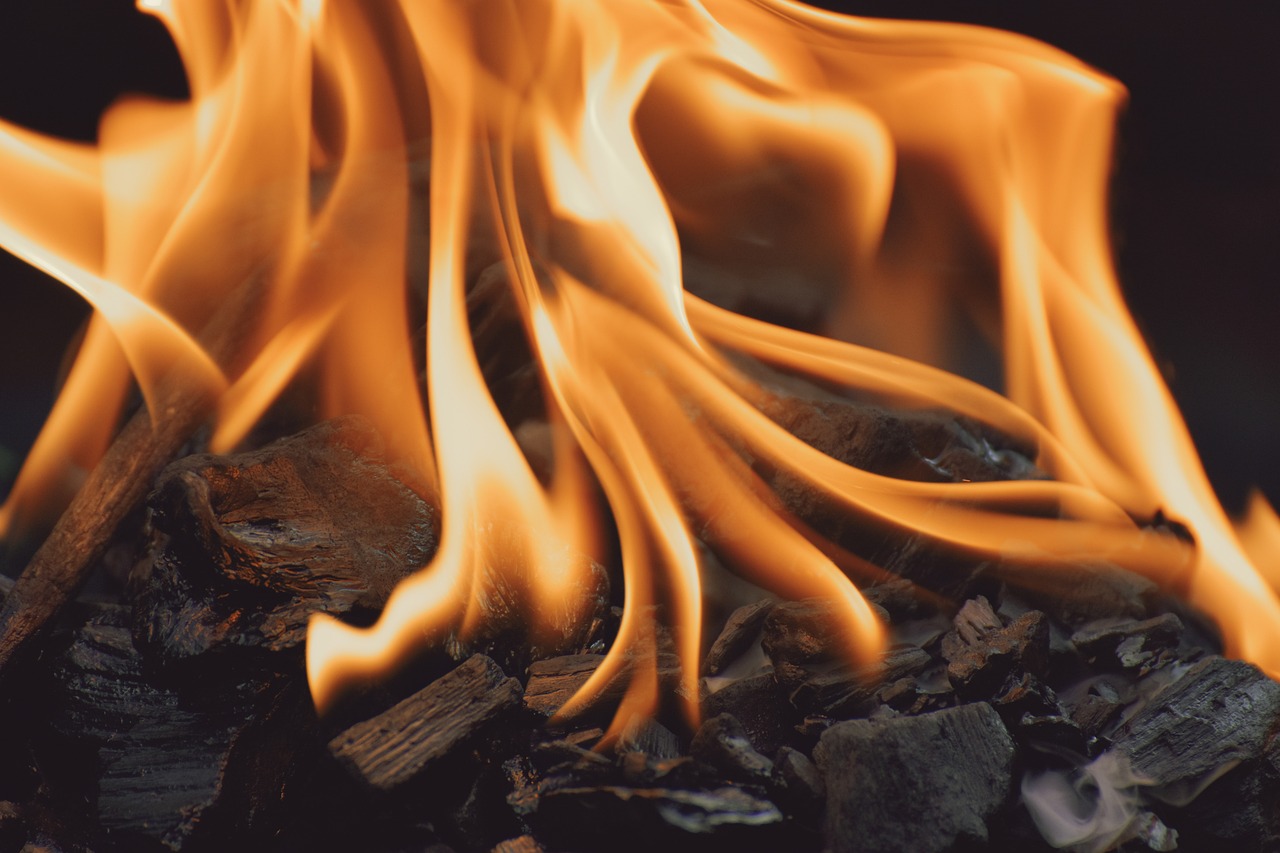
Calling for Help
When a fire breaks out in your kitchen, every second counts. Knowing how to call for help can be the difference between a small incident and a full-blown disaster. First and foremost, it's essential to have emergency numbers readily available. This means not just knowing them by heart but also having them posted in a visible spot, like on the refrigerator or near the phone. You can’t afford to waste precious moments fumbling for a phone book or searching online when chaos erupts.
In the heat of the moment, it’s easy to panic, but staying calm is crucial. When you call for help, remember to provide clear and concise information. Here’s a quick guide on what to communicate:
- Your location: Specify the address clearly, including any landmarks to help responders find you quickly.
- The nature of the emergency: Explain that it’s a kitchen fire, and if possible, mention if anyone is trapped or injured.
- Stay on the line: Don’t hang up until the operator tells you to do so; they may have additional instructions or need more information.
It’s also a good idea to practice this scenario with your family. Conducting mock drills can not only familiarize everyone with the process but also help reduce anxiety during an actual emergency. Just like a fire drill, rehearsing how to call for help can make the procedure feel more routine, allowing you to react swiftly when it matters most.
Additionally, consider having a landline phone in your kitchen, as mobile phones can sometimes be misplaced or run out of battery during an emergency. In the event of a fire, you want to ensure you can reach out for help without any hindrances.
Lastly, always remember that your safety comes first. If the fire is too big to handle, evacuate immediately and let the professionals take care of it. Your life is worth more than any material possession, and knowing how to call for help can save lives, including your own.
Q: What should I do if I can't reach my phone during a fire?
A: If you cannot reach your phone, evacuate the area immediately and alert any nearby neighbors to call for help.
Q: Should I try to extinguish the fire before calling for help?
A: If the fire is small and manageable, you can attempt to extinguish it using a fire extinguisher. However, if it grows uncontrollable, evacuate and call for help right away.
Q: What information do I need to provide when calling emergency services?
A: Provide your exact location, the nature of the emergency, and any details about potential hazards (like gas leaks or flammable materials) to the operator.
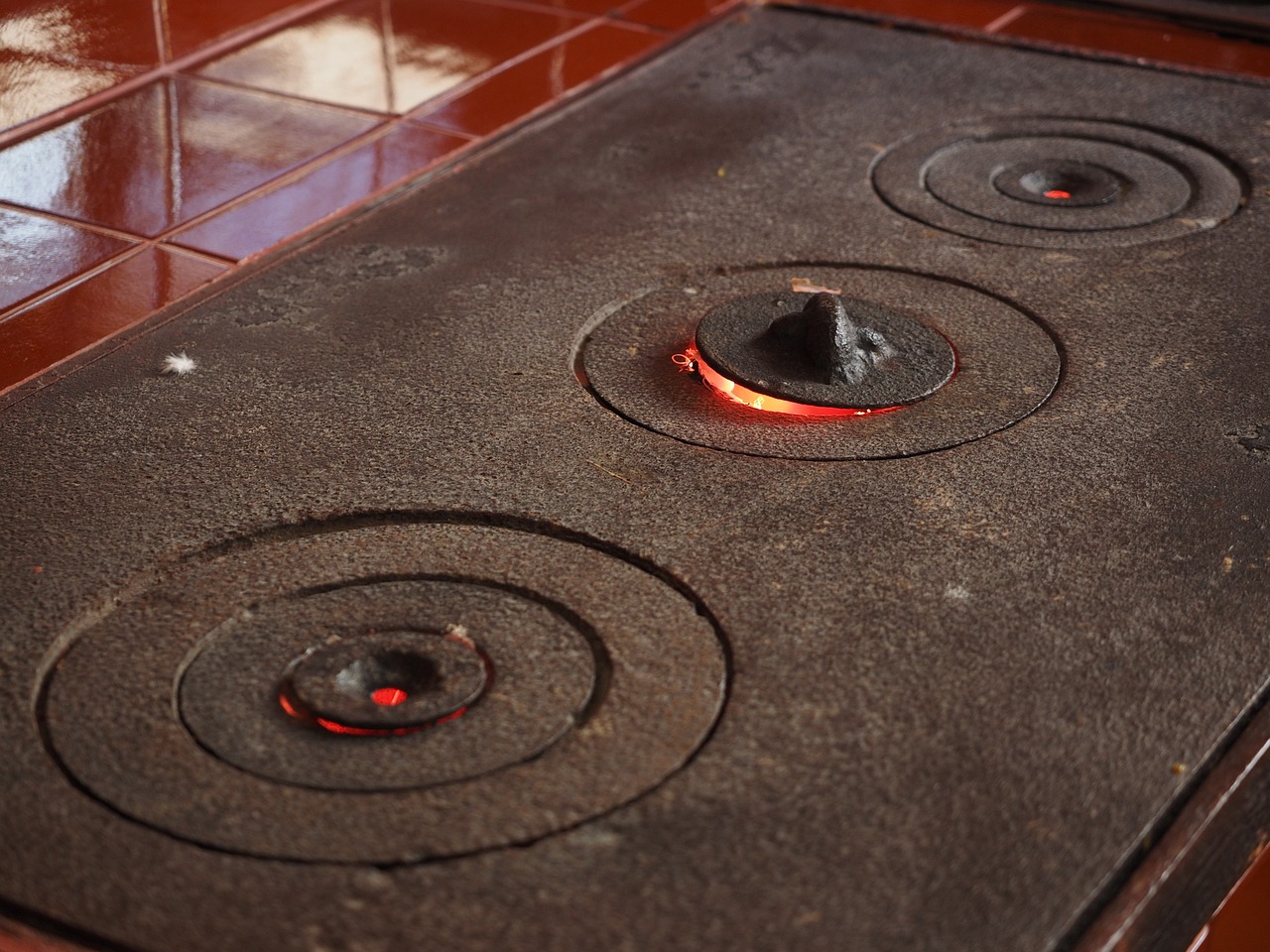
Educating Family Members
When it comes to fire safety in the kitchen, education is your best ally. It’s not just about having the right equipment; it’s about ensuring that every member of the household knows what to do in case of an emergency. Imagine a situation where a fire breaks out, and everyone is left scrambling without a clue on how to respond. That’s a recipe for disaster! By educating your family, you can create a safer environment where everyone feels empowered to act appropriately.
Start by having open discussions about fire safety. Gather your family around the dinner table and talk about the risks associated with cooking. Discuss common causes of kitchen fires, such as unattended cooking, grease buildup, and improper use of appliances. Use real-life examples to illustrate your points—stories of kitchen fires can be eye-opening and serve as a stark reminder of the importance of caution.
It's also essential to teach your family members how to use fire safety equipment. For instance, show them where the fire extinguisher is located and explain how to operate it. You can even conduct a hands-on demonstration! This way, everyone knows what to do in a real emergency. Additionally, familiarize them with the sound of smoke detectors and the importance of alerting everyone in the house if they go off.
Another effective way to reinforce fire safety education is through regular fire drills. Just like schools practice evacuation procedures, your home should do the same. Conducting fire drills helps everyone understand the evacuation routes and practice how to exit the home quickly and safely. You might even want to create a simple map of your home showing the quickest escape routes from the kitchen and other rooms. Hang this map in a common area, so it’s easily accessible for reference.
Don’t forget about guests! When hosting friends or family, take a moment to share your kitchen safety rules. Let them know where the fire extinguisher is and what to do in case of a fire. This small gesture can make a big difference, as it helps create a culture of safety not just for your family but for everyone who enters your home.
In summary, educating family members about kitchen fire safety is an ongoing process that requires attention and commitment. By fostering a culture of awareness and preparedness, you ensure that everyone knows how to react in case of a fire. Remember, the more informed your family is, the safer your kitchen will be!
- What are the most common causes of kitchen fires? Unattended cooking, grease buildup, and faulty appliances are among the top causes.
- How often should I conduct fire drills? It's recommended to conduct fire drills at least twice a year to keep everyone familiar with the procedures.
- What type of fire extinguisher is best for a kitchen? A Class K fire extinguisher is ideal for kitchen fires, especially those involving cooking oils and fats.
- How can I teach my children about fire safety? Use age-appropriate discussions, hands-on demonstrations, and regular practice to instill safety habits in children.

Conducting Fire Drills
When it comes to kitchen safety, one of the most effective ways to prepare for a fire emergency is by conducting regular fire drills. Think of fire drills as a rehearsal for a performance; just as actors practice their lines to ensure a smooth show, your family needs to practice their responses to a fire situation. These drills not only familiarize everyone with the necessary actions to take in the event of a fire but also help to build confidence and reduce panic. Imagine the difference between a chaotic scramble and a well-coordinated exit when every second counts!
To get started, choose a time when everyone is home and can participate. Make it feel as real as possible by simulating a fire scenario. You might want to use a loud alarm or even smoke (from a smoke machine, if you have one) to create a sense of urgency. Ensure everyone understands that this is a practice session aimed at keeping them safe. You can follow these steps to conduct an effective fire drill:
- Discuss the Plan: Before you begin, gather everyone and explain the fire safety plan. Make sure everyone knows the escape routes and where to meet outside.
- Set Off the Alarm: Use a smoke detector or a loud noise to signal the start of the drill. This mimics the sound of an actual fire alarm.
- Practice Evacuation: Everyone should practice exiting the kitchen and the house through the designated routes. Ensure that all family members, including children, know how to exit safely.
- Account for Everyone: Once outside, gather at the meeting point and account for all family members. This is crucial to ensure no one is left behind.
- Debrief: After the drill, discuss what went well and what could be improved. This feedback is essential for refining your fire safety plan.
Regularly scheduled fire drills—ideally, every six months—can make a significant difference in how your family reacts during an actual emergency. Not only does this practice help to instill a sense of responsibility and awareness, but it also reinforces the importance of fire safety in a way that sticks. Remember, the goal is to make everyone feel comfortable and knowledgeable about what to do in case of a fire. It’s like preparing for a storm; the more prepared you are, the less frightening it becomes.
Lastly, don’t forget to include guests in your fire safety discussions. When hosting gatherings, take a moment to inform visitors about your fire escape plan. This simple act can help ensure that everyone is on the same page and can evacuate safely in case of an emergency. After all, safety is a shared responsibility!
Q: How often should we conduct fire drills?
A: It’s recommended to conduct fire drills at least twice a year to keep everyone familiar with the procedures.
Q: What should we do if someone is missing during a fire drill?
A: If someone is unaccounted for, do not re-enter the building. Instead, call emergency services and inform them of the situation.
Q: Should we practice with the kids?
A: Absolutely! Involving children in fire drills helps them understand the importance of safety and prepares them for emergencies.
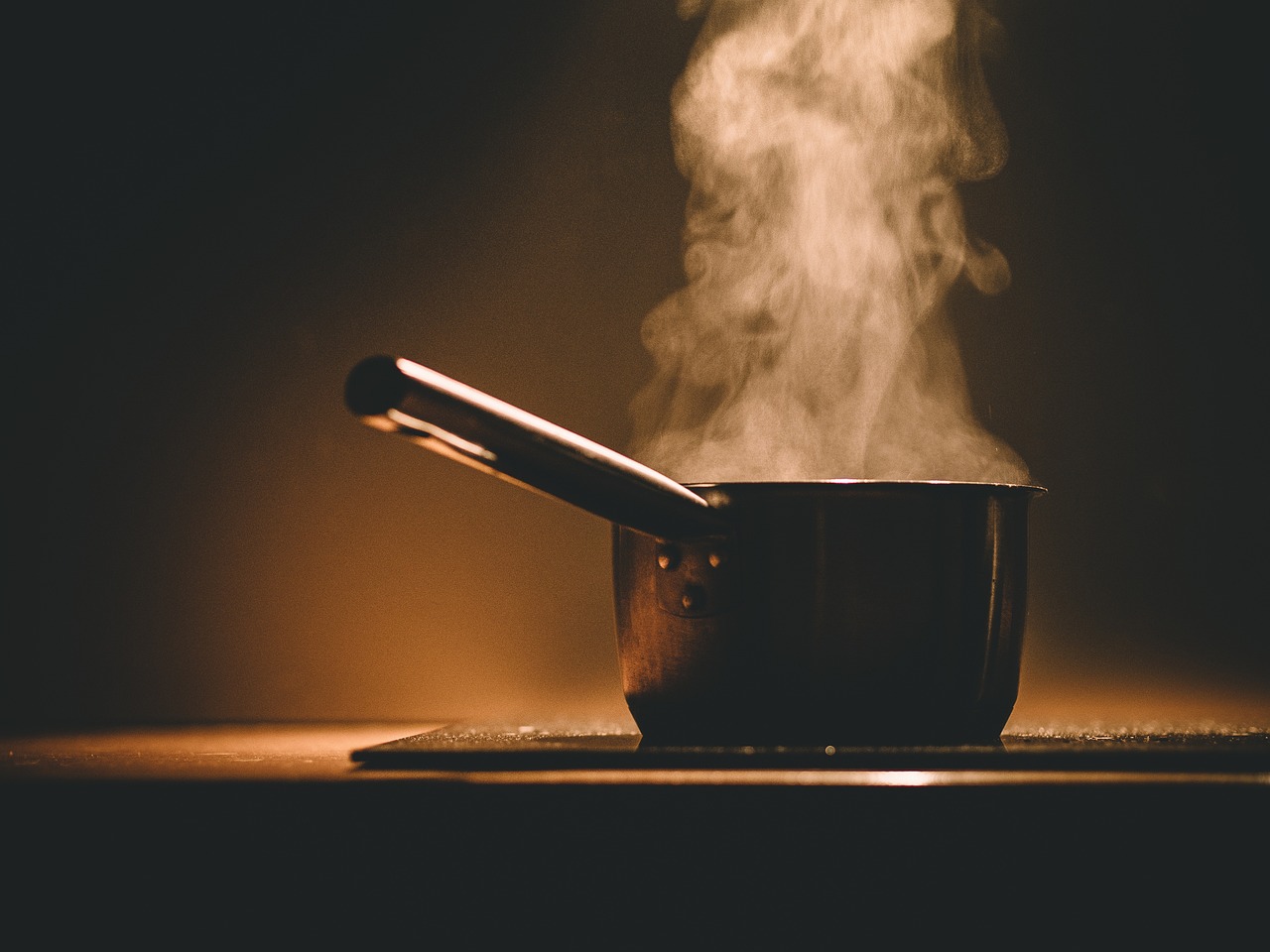
Sharing Knowledge with Guests
When you invite friends and family over for a meal, the last thing on your mind might be fire safety. However, sharing kitchen safety tips with your guests can be a game-changer. Just like you wouldn’t let a stranger drive your car without knowing how to operate it, you shouldn’t let guests roam freely in your kitchen without understanding the potential fire hazards. So, how do you go about this? It’s easier than you might think!
Start by having a friendly chat when they arrive. You can casually mention where the fire extinguisher is located and how to use it. It’s not just about scaring them; it’s about empowering them with knowledge. You might say, “Hey, just in case, there’s a fire extinguisher under the sink. If you ever see flames, remember to aim at the base of the fire!” This simple advice can make all the difference in an emergency.
Another great approach is to share some basic cooking safety practices that everyone should follow. For instance, you could mention the importance of keeping flammable materials away from the stove or not leaving cooking food unattended. You might even consider posting a small sign in your kitchen that highlights these safety tips. Something like:
| Kitchen Safety Tips |
|---|
| Never leave cooking food unattended. |
| Keep flammable items away from the stove. |
| Use oven mitts when handling hot pans. |
| Know where the fire extinguisher is located. |
Additionally, if you’re cooking with oils, it’s crucial to inform your guests about the risks of oil fires. You could explain how to safely handle cooking oils and what to do if a flare-up occurs. For example, you could say, “If the oil starts to smoke, turn off the heat immediately and never pour water on it!” This kind of information can help them react appropriately and avoid panic if something goes wrong.
Lastly, consider making it a habit to conduct a mini safety briefing whenever you have guests over. It doesn’t have to be formal; just a few minutes of sharing knowledge can foster a safer cooking environment. Remember, fire safety is everyone’s responsibility, and by sharing this knowledge, you not only protect your home but also show your guests that you care about their well-being.
- What should I do if a fire starts in my kitchen?
Stay calm, turn off the heat, and use a fire extinguisher if it's safe to do so. Evacuate everyone and call emergency services if the fire is uncontrollable. - How often should I check my smoke detectors?
Check your smoke detectors monthly and replace the batteries at least once a year. - Is it safe to leave cooking appliances unattended?
No, it’s crucial to monitor cooking appliances at all times to prevent overheating and potential fires.
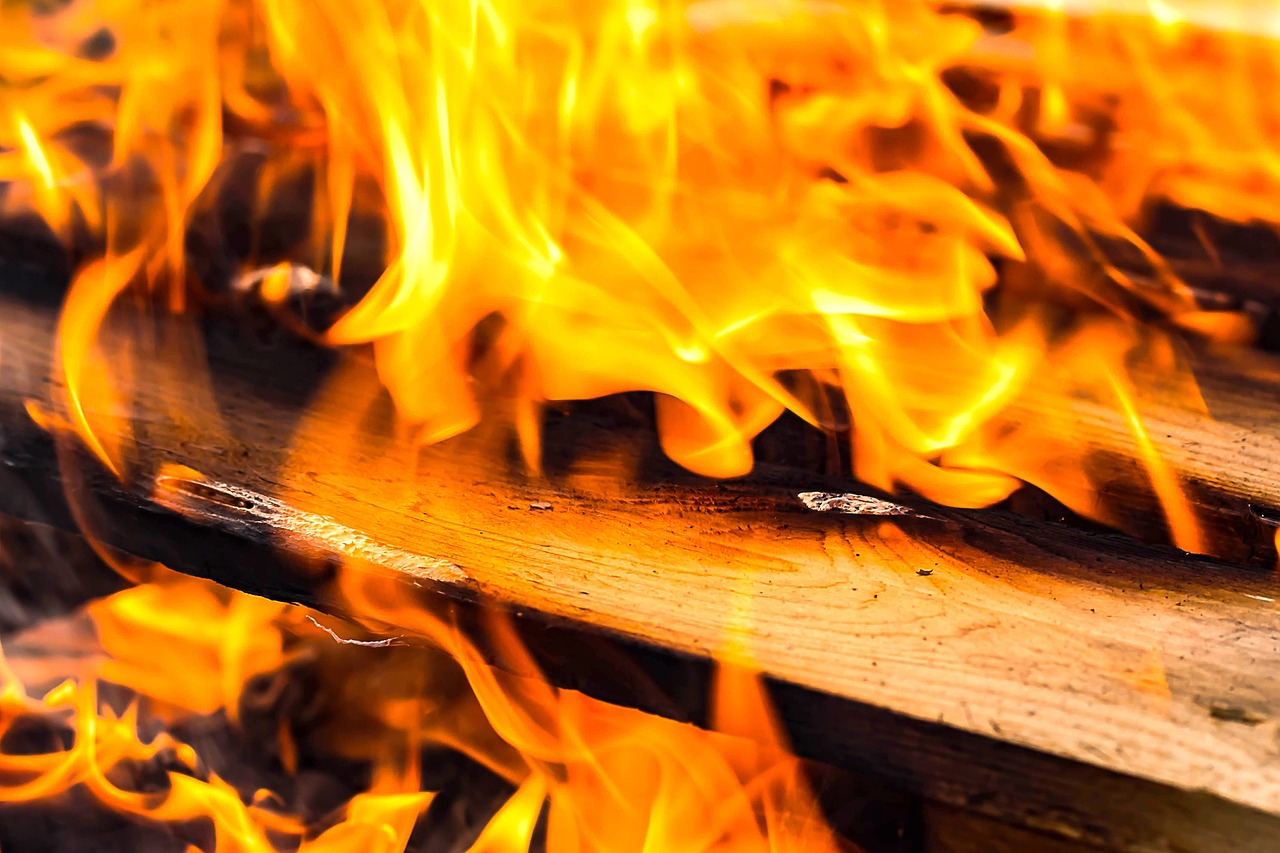
Conclusion: Staying Vigilant
In conclusion, maintaining fire safety in the kitchen is not just a one-time effort; it’s an ongoing commitment that requires constant vigilance and proactive measures. Every time you step into your kitchen, you should be aware of the potential risks and the steps you can take to mitigate them. It’s like being a guardian of your culinary realm, where the heat of the stove and the sizzle of ingredients should never overshadow safety.
Remember, the kitchen is often the heart of the home, bustling with activity and delicious aromas. However, it’s also a place where accidents can happen if we’re not careful. By implementing the fire safety measures discussed throughout this article—such as having the right fire safety equipment, practicing safe cooking habits, and educating everyone in your household—you’re taking significant strides toward preventing kitchen fires.
Moreover, it’s essential to create a culture of safety. Encourage your family members to be alert and to participate in regular fire drills. This not only prepares everyone for emergencies but also fosters a sense of responsibility. Just like we wouldn’t let our kids play in the street without teaching them to look both ways, we shouldn’t overlook the importance of educating them about kitchen safety.
Ultimately, staying vigilant means being proactive. Regularly check your smoke detectors, inspect your fire extinguishers, and always have a plan in place. If we treat fire safety as an integral part of our cooking routine, we can enjoy our time in the kitchen without the looming fear of fire hazards. So, let’s keep our kitchens safe and our loved ones protected!
- What should I do if a fire starts in my kitchen?
If a fire starts, remember to stay calm. If it's small, you can try to extinguish it with a fire extinguisher or cover it with a lid. If it’s out of control, evacuate immediately and call emergency services.
- How often should I check my smoke detectors?
It’s recommended to check your smoke detectors at least once a month and replace the batteries at least once a year. Also, replace the entire unit every 10 years.
- What type of fire extinguisher is best for a kitchen?
A Class K fire extinguisher is ideal for kitchen fires involving cooking oils and fats. However, a multi-purpose extinguisher (Class ABC) can also be effective for various types of fires.
- Can I use water to put out a grease fire?
No, never use water on a grease fire as it can cause the fire to spread. Instead, use a fire extinguisher or cover the flames with a metal lid or baking sheet.
Frequently Asked Questions
- What are the common causes of kitchen fires?
Kitchen fires often stem from unattended cooking, grease buildup, and faulty appliances. It's crucial to stay alert while cooking and regularly clean surfaces to minimize risks.
- How can I prevent fires while cooking?
To prevent fires, always monitor your cooking appliances, avoid wearing loose clothing, and keep flammable materials away from heat sources. Additionally, using the right cooking oils and never leaving pots unattended can greatly reduce fire hazards.
- What type of fire extinguisher should I have in my kitchen?
It's best to have a Class K fire extinguisher for kitchen fires, especially if you often cook with oils or fats. A multi-purpose extinguisher (Class ABC) can also be effective for various fire types.
- How often should I check my smoke detectors?
You should test your smoke detectors monthly and replace the batteries at least once a year. It's also recommended to replace the entire unit every 10 years to ensure optimal performance.
- What should I do if a fire starts in my kitchen?
If a fire starts, immediately turn off the heat source and try to smother the flames with a lid or a fire blanket. If the fire is too large or out of control, evacuate the area and call emergency services.
- How can I educate my family about kitchen fire safety?
Hold regular discussions about fire safety, conduct fire drills, and involve everyone in creating an emergency response plan. Make it a fun learning experience to ensure everyone remembers the information.
- What are the best practices for using cooking oils safely?
Always heat oils slowly and never leave them unattended. Use oils with high smoke points for frying, and if a pot catches fire, never use water; instead, cover it or use a fire extinguisher.
- How can I maintain my kitchen's fire safety equipment?
Regularly inspect your fire extinguishers, smoke detectors, and fire blankets. Check expiration dates, replace batteries, and ensure everything is easily accessible in case of an emergency.

